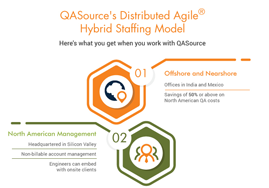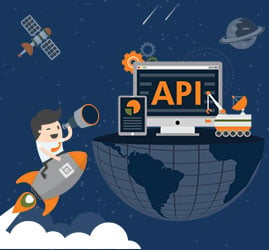A cloud security assessment is a complete evaluation of hosted application as well as the platform itself. In this expert series, we talk about how can we do that along with some highlights from the RSA conference and GDPR.
QASource Blog
In our blog, we take a deep dive into the latest QA strategies, methodologies, and industry best practices driving the world of quality assurance. Follow our blog to get new ideas as to how to effectively deliver high-quality, bug-free software products, websites, and applications, while keeping costs low.

QA onboarding can be an overwhelming process for any company, especially when there are so many factors to consider. Partner availability, testing infrastructure, training, domain experience, testing experience, communication skills—all of this can impact your success when working with an offshore QA team. By allocating your resources appropriately, you can proceed with onboarding your outsourced offshore QA team with ease and boost your QA productivity in the long run. Doing this successfully requires a solid understanding on how to onboard a QA team effectively. So, where should a business begin when onboarding their outsourced QA team? We recommend following this advice from our QA experts, from asking the right questions to establishing parameters for project success.
Remember the days when storing sensitive data behind a simple alphanumeric password worked just fine? Those were the days... such simple, innocent days. Every time the latest company data breach makes the news, we’re reminded that those days are over. As hackers and leakers become ever more skilled and brazen, product companies are responding by doubling down on security measures to protect their users, proprietary information, and their reputation in the market. Today, access control goes far beyond the keyboard. The advent of biometrics - the process of authenticating a person using physical or behavioral characteristics - is expanding the reach of security and increasing its effectiveness.
Business success is also related to the performance of a smartphone application. Hence, we have come up with useful information about performance testing for mobile apps and evaluated “LoadView” – a performance testing tool.
Back in the day, outsourcing was implemented purely as a cost-cutting measure. Organizations would assess which services were vital enough to be kept in-house, and farm out the rest to outside vendors. The work got done, but often, it just wasn’t up to par with what an onsite team could have accomplished. Reasons for this varied -- poor onboarding, insufficient communication, lack of familiarity with the product -- the list goes on.
For young product companies struggling to find their place in the market, there’s no slack. No margin for error, no wiggle room, and no second chances from customers or investors. This means that everyone and their competitors are striving for perfection, and lean teams are trying to run like those twice their size. It’s hard, but it’s the cost of innovating and succeeding.
How does QASource make outsourcing QA successful? We use a Distributed Agile® hybrid staffing model that combines offshore, nearshore and onsite technical talent with U.S. management. View our infographic below:
QASource recently presented the webinar, "The Future is API Testing - Trends and How to Propel Your Testing." We presented this webinar twice due to its popularity. In this webinar, QASource CEO Rajeev Rai discussed API testing's central role in the future of QA, and the necessity and benefits of testing APIs. In the webinar, Rajeev also walked the audience through detailed video demonstrations on how to perform API testing.
A few years back, the trend was mobile first, followed by the web, and then came the APIs. Today, the trends have inclined towards APIs first, then mobile, and finally the web.
Written by QA Experts
QASource Blog, for executives and engineers, shares QA strategies, methodologies, and new ideas to inform and help effectively deliver quality products, websites and applications.
Categories
Authors
Our bloggers are the test management experts at QASource. They are executives, QA managers, team leads, and testing practitioners. Their combined experience exceeds 100 years and they know how to optimize QA efforts in a variety of industries, domains, tools, and technologies.








